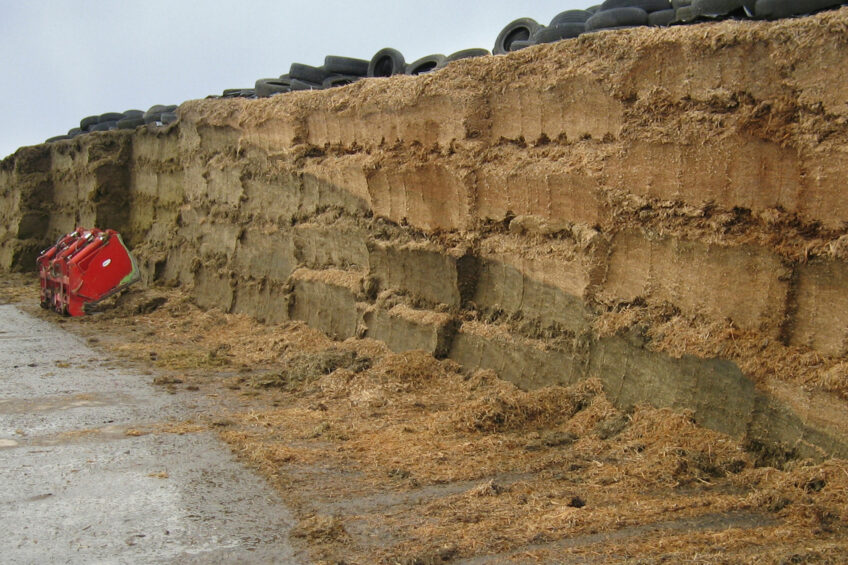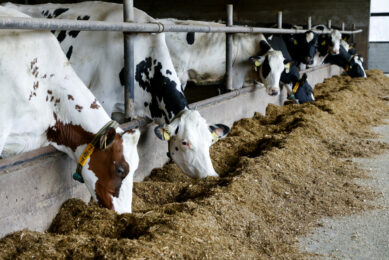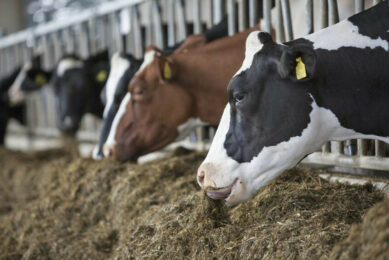Hot silage: How to identify if it’s good or bad

Silage plays a crucial role in maintaining livestock health and productivity, and monitoring its quality is essential. One of the concerns with silage is its temperature. It’s important to understand that hot silage doesn’t always indicate a problem, but it’s essential to know how to differentiate between retained heat and aerobic spoilage. This article will help you understand the key points and practical methods for identifying the condition of your silage.
Understanding silage temperature
You might have experienced this scenario: the silage face feels cool, but during unloading into the mixer wagon, you notice ‘steaming hot silage’ with a much higher temperature inside the silo. This situation is common and can be misleading if not properly understood.
Hot silage is typically linked to aerobic deterioration caused by the breakdown of dry matter by yeasts and moulds. However, ‘hot’ does not necessarily mean ‘heating’. A temperature rise in the initial hours after ensiling is a natural process. Fermentation starts with microorganisms consuming residual oxygen, an exothermic process that raises the temperature; furthermore, the plant respiration generates an increase in temperature.
Factors influencing silage temperature increase
Several factors influence the temperature increase during the initial phase after ensiling:
- Dry matter content: The moisture level in the crop can affect how quickly the temperature rises.
- Time to fill and close the silo: The speed and efficiency of ensiling processes impact temperature control.
- Presence of oxygen-consuming bacteria, yeasts, and moulds: These microorganisms contribute to the temperature rise.
- Silage porosity: This is the percentage of the silage volume not filled with solid mass. The target is to keep porosity below 40%. Even in well-compacted silage, immediately after harvest, about 40% of the total volume is air-containing oxygen.
Stronger compaction reduces porosity and limits the temperature rise from aerobic fermentation in the initial hours of ensiling. A temperature increases of 10°C above the starting point is considered acceptable. After this, cooling begins if the ambient temperature is lower than the silage clamp temperature. The speed of cooling depends on the silage clamp volume, compaction quality, ambient temperature, and silage mass. Larger volumes of silage retain heat for longer.
Identifying aerobic spoilage
Is it retained heat or aerobic spoilage? Several simple observations can help determine whether silage is warm because it is still cooling down or due to aerobic spoilage. Measuring the temperature or pH of the silage can provide information to find out if there’s a reason for concern.
The ‘bucket test’
The ‘bucket test’ is a straightforward method to identify the cause of warmth in silage. Here’s how to perform it:
- Gather a sample: Place 5-10 kg of the suspiciously warm silage in a bucket.
- Insert a thermometer: Place a thermometer in the center of the silage sample.
- Set the bucket at room temperature: Ensure it is away from direct sunlight.
Checking results
Next day temperature: If the silage temperature is higher than room temperature the following day, the silage is aerobically unstable and is spoiling.
Temperature similar to ambient: If the temperature is similar to the ambient temperature, the silage is aerobically stable and safe to feed.
Practical steps to take
If the silage temperature after one day at room temperature is similar to the ambient temperature, it indicates that the silage is aerobically stable and safe to feed. The ‘hot’ silage in the clamp is still cooling down.
However, if you find that your silage shows signs of aerobic spoilage, it’s crucial to take action. Contact your Novonesis representative for assistance. Together, you can develop a strategy to ensure your silage remains aerobically stable next season. This proactive approach can help maintain the quality and safety of your silage, ensuring that your livestock receive the best possible nutrition.
Advanced inoculant to prevent aerobic spoilage
SiloSolve FC is an advanced silage inoculant featuring Oxycap technology, designed to prevent aerobic spoilage in silage. This innovative inoculant works by significantly reducing the presence of oxygen during the first phase of ensilage by the presence of Lactococcus lactis O224, thereby inhibiting the growth of spoilage organisms such as yeasts and moulds.
Additionally, it produces acetic acid through the action of the Lactobacillus buchneri strain. Acetic acid is a crucial component in controlling yeasts and moulds, effectively preventing silage heating, and maintaining its nutritional quality and stability throughout the storage period. By creating an anaerobic environment and producing beneficial acids, SiloSolve FC ensures that the silage remains fresh and of high quality. This process reduces dry matter losses and enhances the efficiency of silage use.
Conclusion
Monitoring the temperature of your silage is a critical part of ensuring its quality. By understanding the difference between retained heat and aerobic spoilage, and using practical methods like the bucket test, you can make informed decisions about your silage management. Always keep an eye on hot silage but remember that hot does not always mean bad. With the right knowledge and tools, you can maintain high-quality silage that supports the health and productivity of your livestock.




